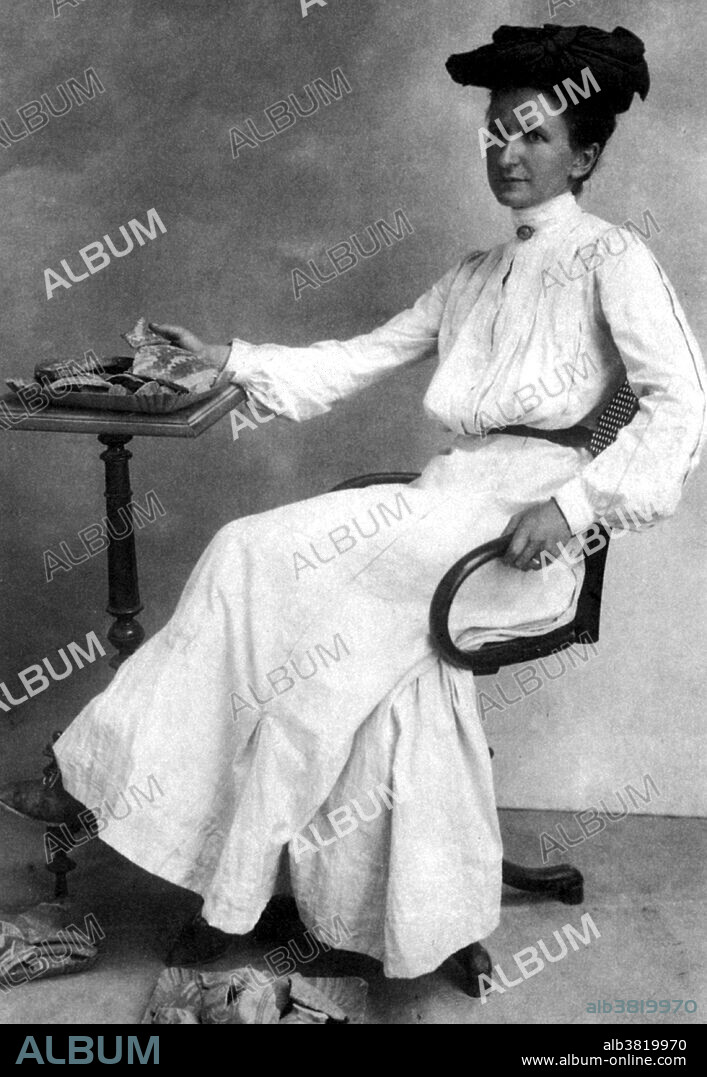alb3819970
Harriet Boyd, American Archeologist

|
Zu einem anderen Lightbox hinzufügen |
|
Zu einem anderen Lightbox hinzufügen |



Haben Sie bereits ein Konto? Anmelden
Sie haben kein Konto? Registrieren
Dieses Bild kaufen.
Nutzung auswählen:

Titel:
Harriet Boyd, American Archeologist
Untertitel:
Siehe automatische Übersetzung
Boyd displays pieces of broken Minoan bowls, jars, and vases in 1902. Harriet Boyd-Hawes (October 11, 1871 - March 31, 1945) was a pioneering American archeologist, nurse and relief worker. In 1896 she started graduate work at the American School of Classical Studies in Athens and also served as a volunteer nurse in Thessaly during the Greco-Turkish War. In 1900 she led an excavation at Kavousi during which she discovered settlements and cemeteries of Late Minoan IIIC, Early Iron Age, and Early Archaic date (1200-600 BC) at the sites of Vronda and Kastro. She accepted a position at Smith College teaching Greek Archeology. Between 1901-04, she returned to Crete where she discovered and excavated the Minoan town at Gournia. In 1902, she described her discovery during a national lecture tour and was the first woman to speak before the Archeological Institute of America. During another trip to Crete, she met Charles Henry Hawes, an English anthropologist and archaeologist whom she married in 1906. She excavated many more Bronze and Iron Age settlements in the Aegean and became a recognized authority on the area. She died in 1945, at the age of 73.
Bildnachweis:
Album / Science Source / New York Public Library
Freigaben (Releases):
Model: Nein - Eigentum: Nein
Rechtefragen?
Rechtefragen?
Bildgröße:
3262 x 4726 px | 44.1 MB
Druckgröße:
27.6 x 40.0 cm | 10.9 x 15.8 in (300 dpi)
Schlüsselwörter:
 Pinterest
Pinterest Twitter
Twitter Facebook
Facebook Link kopieren
Link kopieren Email
Email
